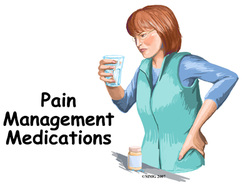Reducing Pain, Improving Function: Principles of Effective Pain Management  • In 2009, the latest year for which data are available, an estimated 7 million Americans were abusing prescription drugs—more than the number abusing cocaine, heroin, hallucinogens, and inhalants, combined.’ • Emergency-room visits related to non-medical use of opioids rose 111% between 2004 and 2008. • Between 1998 and 2008, the rate of opioid misuse increased 400%. • Drug overdose is now the second-leading cause of accidental death in America, exceeded only by car crashes. This rising tide of abuse has led to calls for tighter regulation of pain management practices. In July 2012, the U.S. Food and Drug Administration (FDA) released its final Risk Evaluation and Mitigation Strategies (REMS) content guidelines for prescriber education related to extended-release (ER) and long-acting (LA) opioid analgesics.5 The previous year, the White House Office of National Drug Control Policy, in collaboration with other branches of the federal government, introduced the “Action Plan To Address National Prescription Drug Abuse Epidemic.”6 These initiatives, echoing statements in recent clinical guidelines, seek to balance a crack-down on non-medical use of opioids while imultaneously protecting the delivery of effective pain management to legitimate patients. Most recently, the FDA required labeling changes for ER/LA opioids that attempt to narrow their use. Where these opioids were previously indicated for “the relief of moderate to severe pain in patients requiring continuous, around-the-clock treatment,” the new indication is for “the management of pain severe enough to require daily, around-the-clock, long-term opioid treatment and for which alternative treatment options are inadequate”’ CHIROPRACTIC FIRST In addition, new cautionary language was added: “Because of the risks of addiction, abuse and misuse with opioids, even at recommended doses, and because of the greater risks of overdone and death with extended-release opioid formulations, reserve [Tradename] for use in patients for whom alternative treatment options (e.g. non-opioid analgesics or immediate-release opioids) are ineffective, not tolerated, or would be otherwise inadequate to provide sufficient management of pain.”The need for such effective management remains as critical as ever. Pain remains the most common reason individuals seek health care. Chronic pain was estimated in a 2011 study to affect approximately 100 million Americans and to cost roughly $635 billion annually in treatment and lost productivity.8 In fact, the incidence of chronic pain in the U.S. is greater than that of diabetes, heart disease, and cancer combined.
0 Comments
Leave a Reply. |
New Patient SpecialArchives
July 2024
Categories |
 RSS Feed
RSS Feed
